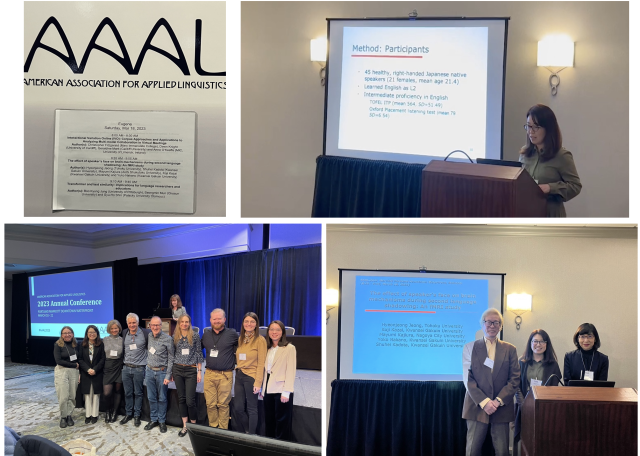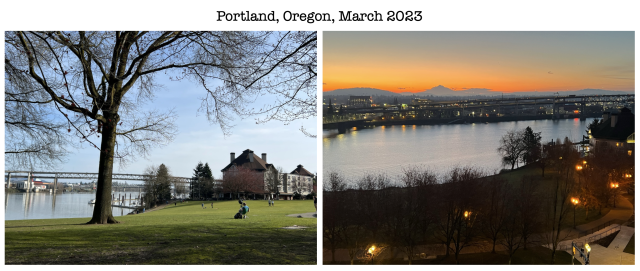Research News Details

Human brain science for the future
Super aging society, increasing disasters, and ‘smart’ society to come; how do these environmental and social changes affect our lives and values? From the perspective of cognition and brain science, we aim to make proposals on the future of human life, technology and society.
202303.18 Neural Mechanisms of Spontaneous Speech in Disasters (Invited colloquia at the AAAL2023) Posted in RESEARCH
Attachments




During the American Association for Applied Linguistics conference, I presented my research with Andrea Revesz from UCL in the Invited Colloquia. Our study focused on the neural activity that occurs during spontaneous speech production, which is a challenging task in brain imaging. In addition, we investigated the brain activity underlying spontaneous speech in a disaster situation in a second language, which is a novel challenge in the field of second language acquisition. Our presentation was part of an invited colloquium and was well received by the participating researchers.
In addition, I presented another study (in collaboration with Prof. Kadota at Kwansei Gakuin University) that examined the effect of a human face on shadowing, a language practice that promotes improvement in a second language by imitating model speech. Our results confirmed that the presence and absence of a human face facilitated shadowing and that learners rely heavily on facial information to enhance verbal language activity in the brain. The scientific validation of the importance of facial information in shadowing impressed researchers in the field of language education, as previous studies had focused only on sound.
Overall, the conference was an excellent platform for exchanging ideas and sharing research with a diverse group of applied linguists. With 1,820 attendees this year, it is one of the largest conferences organized by the American Association for Applied Linguistics. (Jeong)